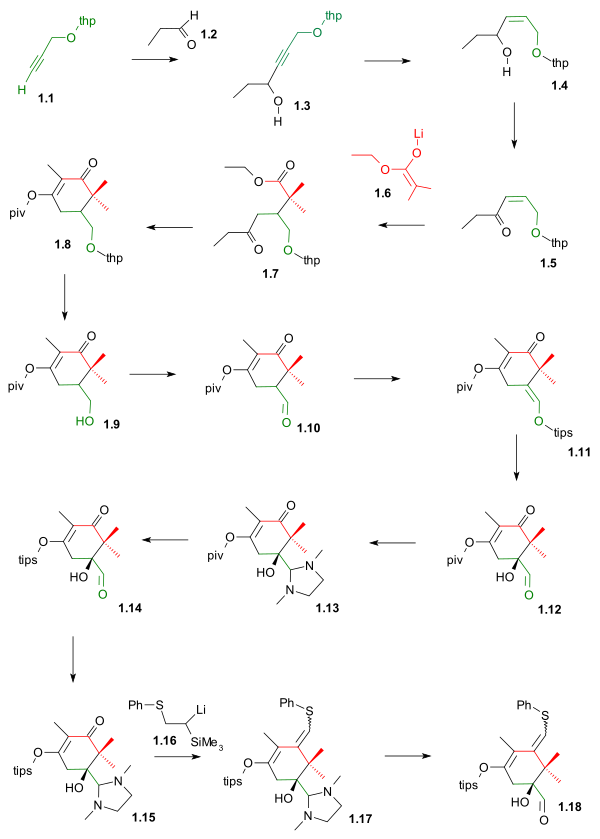Kuwajima Taxol total synthesis
This synthesis is truly synthetic without any help from small biomolecule precursors and also a
The 20 carbon frame is constructed from several pieces:
Synthesis A ring
Ring A synthesis (scheme 1) started by joining the
 |
| Scheme 1 |
|---|
Synthesis B ring
The bottom part of ring B was constructed by
After deprotection (
 |
| Scheme 2 |
|---|
Synthesis C ring
Completion of the C ring required complete reduction of the arene, placement of para oxygen atoms and importantly introduction of the C19 methyl group. The first assault on the aromatic ring in 3.1 (scheme 3) was launched with
 |
| Scheme 3 |
|---|
Synthesis D ring
By protecting the diol group in triol 4.1 (scheme 4) as the phenyl boronic ester 4.2, the remaining alcohol group could be protected as the TBS ether 4.3. After deprotecting the diol group (
 |
| Scheme 4 |
|---|
Tail addition
The C1, C2 and C4 functional groups were put in place next and starting from oxetane 5.1 (scheme 5) the MOM protecting group is removed in 5.2 (PPTS) and replaced by a TES group TESCl) in 5.3. The acetal group was removed in 5.4 (hydrogenation PdOH2, H2) and replaced by a carbonate ester group in 5.5 (triphosgene, pyridine). The tertiary alcohol group was acetylated in 5.6 and in the final step the carbonate group was opened by reaction with phenyllithium to the hydroxyester 5.7.
Prior to tail addition the TES protective group was removed in 5.8 (
 |
| Scheme 5 |
|---|
See also
- Paclitaxel total synthesis
- Danishefsky Taxol total synthesis
- Holton Taxol total synthesis
- Mukaiyama Taxol total synthesis
- Nicolaou Taxol total synthesis
- Wender Taxol total synthesis
External links
References
- .
- .
